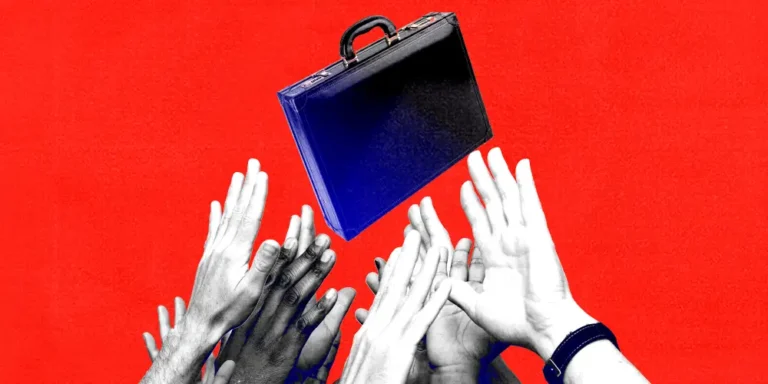Goldman Sachs’ investing playbook through year-end: 3 leaders share their advice, including how to cash in on a potential double-digit rally in stocks

- Goldman Sachs’ mid-year economic outlook is relatively positive.
- The firm downgraded the probability of a recession to 20% from 25% to 35% earlier.
- Stay invested, favor US stocks, and tilt to higher-quality credit, top experts said.
Drivers stuck in traffic frequently attempt to change lanes to those that appear to be moving faster. However, according to a 1999 study conducted by statistics professor Robert Tibshirani, this is an illusion. Lane changing does not speed up traffic and may increase the risk of a collision.
This analogy served as a prelude to Goldman Sachs’ mid-year investment outlook for 2023.
“Do not change lanes unnecessarily,” said Sharmin Mossavar-Rahmani, the firm’s chief investment officer of wealth management and head of the investment strategy group. Instead, despite the ongoing economic uncertainty, you should remain invested.
A post-COVID world has created uncharted territory, with supply-chain backups and 40-year-high inflation causing ripple effects. Academic economists in a July 15 Wall Street Journal survey expect a recession in the next 12 months with a 54% median probability.
Jan Hatzius, Goldman’s chief economist and head of global investment research, stated that the firm is still relatively optimistic about the future. The bank reduced its expectation of a US recession to a one-year low, dropping from 35% to 25% to 20%.
According to Mossavar-Rahmani, the bank’s base-case target for the S&P 500 at the start of this year is also optimistic, in the 4,200-4,300 range, with a better scenario being 4,800, or a 27% upside.
That may appear overly optimistic, but Mossavar-Rahmani pointed out that it isn’t out of the ordinary given the stock market’s 28% drop from last year. She added that historically, when stocks fall 20% or more, returns are favorable in the next 12 to 24 months.
Nonetheless, this year’s gains have come from a small group of large-cap stocks with exposure to artificial intelligence. Because of the lack of diverse winners, investors are questioning the overall strength of the US market and whether Goldman’s bullish outlook on US equities is realistic.
“What’s really fascinating is that after such a narrow breadth, the market continues to rally,” Mossavar-Rahmani said. “So, in three instances in the last 20, 30 years, the market actually continued to have double-digit returns after that.” In terms of specific episodes, the lowest was around 16%. The highest increase was around 45%.”
In terms of AI’s strength and impact on the US economy, it will extend beyond stock gainers: According to Hatzius, the effects of generative AI could be significant because it can replace tasks like filling out forms, building routine models, coding, and writing emails: roughly 25% of work tasks in the next 10 to 15 years.
If those estimates are correct, labor productivity growth could be increased by 1.5%, according to Hatzius. This is similar to the growth experienced by computers in the 1990s, he added. However, how long adoption will take, what workers will do with the extra time, and whether it will be used productively remain to be seen, he added.
Mossavar-Rahmani also stated that history shows that a US-centric portfolio outperforms emerging markets. For example, if an investor put $100 million into the S&P 500 during the global financial crisis when earnings were low, that amount is now worth $880 million. She pointed out that the same amount invested in China would have only yielded about $260 million.
However, there are still areas of concern in the economy that investors should be aware of: According to Julian Salisbury, Goldman Sachs’ chief investment officer of asset and wealth management, we have been delicately tiptoeing our way through weak and strong parts of the economy. On the one hand, private sector balance sheets remain healthy, global housing prices remain stable due to undersupply, and the services sector has gradually recovered.
Manufacturing, on the other hand, remains weak. Furthermore, the failure of US regional banks in March and the UK pension market crisis in September serve as reminders that there is hidden leverage in the system, and pressure on banks is expected to remain, according to Salisbury. As a result, he advises fixed-income investors to maintain a high level of quality in investment grade and agency mortgage-backed securities.
This is critical now that real estate is in the early stages of a correction, according to Salisbury. Commercial and office real estate is in distress. Salisbury noted that approximately $1.4 trillion of debt will mature between now and the end of next year, with renewal based on new interest rates. However, he added that you can already see signs of keys being returned.
This will put additional strain on banks with exposure to the sector. Banks that are required to disclose the amount of commercial real estate exposure they have each quarter are more likely to show that they have less, according to Salisbury. Furthermore, they will be required to hold more capital as a buffer, which will make them less likely to make new loans. As a result, new defaults are possible within the next one or two years.






